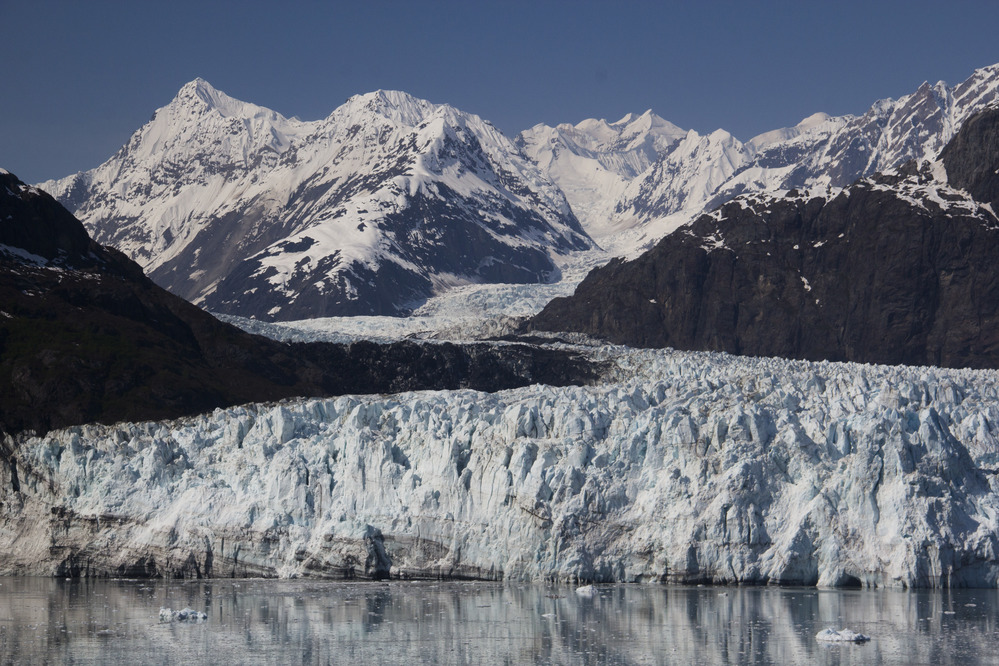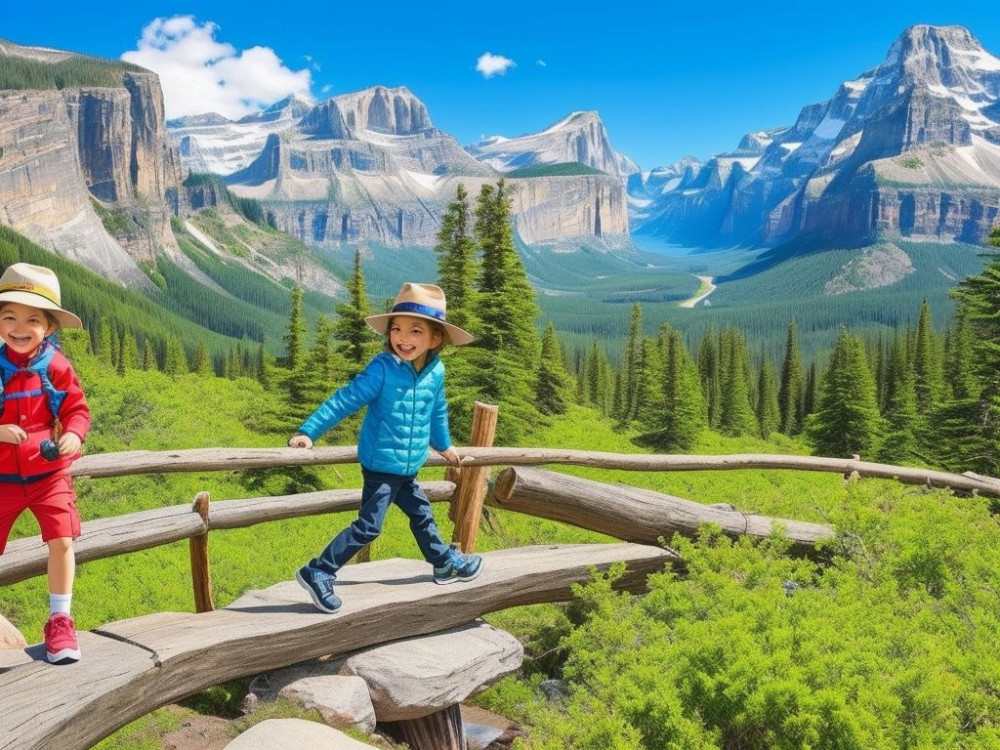Pondering what Glacier Bay National Park has in store? Abounding with different animals and captivating views, this remarkable park is a must-visit! Craving adventure or simply wishing to take in nature’s magnificence? Glacier Bay National Park is the ideal place to go!
Introduction
Venture into Glacier Bay National Park and Preserve in Alaska’s southeastern corner, and be met with icy glaciers, majestic mountains and diverse wildlife. Towers of ice crafted by centuries of glacial movement will awe you. But the park isn’t just about glaciers – the ancient Sitka spruce trees and shimmering coastal beaches filled with sun-basking sea lions are delightful sights to behold.
John Muir explored the glacier-carved fjords of Glacier Bay in 1879 – an influential naturalist who fought for wilderness preservation. His words still echo today, as a reminder of the importance of cherishing our natural wonders. Thanks to Muir, Glacier Bay became a national monument in 1925.
Glacier Bay National Park and Preserve – a place where nature’s freezer meets adventure’s deep freeze.
Location and History
Glacier Bay National Park and Preserve is an Alaskan haven of rich history and breathtaking natural beauty. Here’s a peek at the place and its importance:
Location:
Alaska – formerly inhabited by Tlingit indigenous people.
History:
Explored by Captain George Vancouver in 1794.
Named Glacier Bay due to the glaciers.
Designated a national monument in 1925.
National park and preserve in 1980.
Apart from its history, Glacier Bay is renowned for its wildlife, including whales, sea lions, bears, and mountain goats. Plus, it has fjords, mountains, and blue icebergs.
To enjoy your visit and keep Glacier Bay safe:
- Check the park’s website for info on weather and guidelines.
- Take a guided tour for insights into ecology and history.
- Get outdoors – kayak, hike, or fish.
- Follow proper waste disposal practices.
- Support local conservation efforts.
Follow these suggestions for an unforgettable time and to secure Glacier Bay for future generations!
Geography
Glacier Bay National Park and Preserve, nestled in Alaska’s rugged mountains, features a stunning landscape shaped by ice. It covers 3.3 million acres with remarkable fjords, glaciers, and dense wilderness. The glaciers are ever-changing, sculpting valleys of shimmering blue waters. There’re over 50 named glaciers with many unnamed ones.
The park’s rich biodiversity includes old-growth forests, meadows of wildflowers, and mossy wetlands. Moose, bears, wolves, and mountain goats roam the trees, and the coastal waters harbor whales, seals, sea lions, and otters.
The Tlingit people have inhabited this region for centuries and have a deep connection to it. European explorers arrived in the late 18th century and caused significant changes to both the native communities and the environment. Logging remnants can still be seen today.
Glacier Bay National Park and Preserve captivates with its fjords and glaciers, its rich biodiversity, and its complex history. Exploring this pristine wilderness is an opportunity to connect with both natural beauty and history. Climate change may be melting the glaciers, but at least we’ll have postcards!
Climate
Glacier Bay National Park and Preserve is renowned for its diverse climate. Winters are long, cold, and snowy, whereas summers are short and mild. This special climate creates a dynamic habitat, encouraging the growth of glaciers.
This climate has a big effect on the park’s ecosystem. Heavy snowfall in winter means glaciers can form. These glaciers move down valleys, forming deep fjords and stunning views.
The wildlife must also adapt to the cold temperatures. Humpback whales come in summer, and grizzly bears eat salmon before hibernating in winter.
Sadly, the park is changing quickly due to climate change. Most glaciers have retreated since the 18th century, changing the landscape dramatically. We must act now to save Glacier Bay for future generations.
Flora and Fauna
Glacier Bay National Park and Preserve is home to an array of diverse ecosystems. Its flora and fauna are a stunning display of nature’s beauty and strength. Spruce trees, alpine meadows, mosses, wildflowers, and lichen all make up the park’s unique landscape.
It’s also a popular spot for humpback whales during their summer feeding season – a once-in-a-lifetime experience for visitors. Harbor seals, mountain goats, sea otters, and porcupines can also be found in the park.
If you’re looking for a chance to commune with nature, Glacier Bay National Park and Preserve is the perfect place to go.
Ecosystem
At Glacier Bay National Park and Preserve, an intricate web of life awaits! A diverse and remarkable ecosystem is home to interconnected organisms and their environment, which sustain plant and animal species.
To experience it, take guided tours with knowledgeable rangers!
Ecosystem Components
| Ecosystem | Components |
|---|---|
| Dense forests | Bears |
| Lush meadows | Mountain goats |
| Vibrant flowers | Whales |
| Sprawling glaciers | Seals |
| Crystal-clear rivers | Bald eagles |
Discover the park’s unique features! Dense forests house bears and mountain goats. Vibrant flowers attract whales, and sprawling glaciers are habitats for seals. Crystal-clear rivers are ideal feeding grounds for bald eagles.
Conservation can be exciting! Glacier Bay National Park and Preserve proves that saving nature can be just like a roller coaster – without the long lines, sudden drops, or screaming!
Conservation
Conservation efforts in this park are all about protecting its wild life and varied ecosystems. Tactics like habitat restoration, pollution control and sustainable tourism are used to ensure its pristine wilderness is kept safe.
Strict regulations are in place to reduce human effect on the environment. Rules like fishing and hunting limitations, and guidelines for waste disposal and camping must be followed. This allows visitors to explore without affecting the environment.
Remote sensing techniques are employed to monitor the glaciers. Satellite imagery and aerial surveys give data on glacier dynamics that help scientists understand climate change and the health of the ice masses. This is beneficial for predicting impacts and devising conservation strategies.
Community engagement is essential for conservation too. Local stakeholders take part in decision-making, considering the needs of both nature and people. Projects with native communities aid in preserving cultural heritage while protecting natural resources.
Educational programs also play a part in conservation. By teaching visitors about vulnerable ecosystems, endangered species and sustainable habits, they can make choices that benefit conservation.
Recreation
At Glacier Bay National Park and Preserve, recreation activities await visitors to enjoy the breathtaking wilderness. Hike through lush forests, camp under the stars, watch wildlife, kayak among glaciers, or fish for salmon. Plus, take part in guided tours or ranger-led programs and gain insights into the park’s ecosystems and history.
Pack the right gear: Sturdy hiking boots, bear spray (if hiking), and layers for changing weather conditions. Safety should always be a priority. And remember, prepare to be amazed by the stunning beauty of the park – not an aggressive gust of wind!
Tourism
Glacier Bay National Park and Preserve is a must-visit destination. It boasts stunning landscapes and abundant wildlife. There are plenty of outdoor activities like hiking, kayaking, and wildlife watching. Plus, visitors can explore glaciers and learn about the park’s history. A unique feature is whale watching. The waters are full of marine life, including humpback whales. Don’t forget your camera and binoculars when you visit!
In the future, it might just be called Slushie Bay – global warming is the ultimate brain freeze!
Future
Glacier Bay National Park and Preserve is ever-changing. Their focus is to maintain and conserve the pristine beauty for future generations.
The table below shows what’s to come in the next few years:
Park Projects and Initiatives
| Year | Projects | Initiatives |
|---|---|---|
| 2022 | Trail Maint. | Safer hiking experiences with regular park trail maintenance. |
| 2023 | Wildlife Mon. | Advanced monitoring systems to study wildlife behavior and population. |
| 2024 | Climate Res. | Research on climate change impact in Glacier Bay. |
| 2025 | Visitor Ctr. | Expanding visitor center to accommodate more people, plus educational resources. |
Also, the park holds many events like wilderness workshops, nature photography contests, and educational programs to engage visitors with its ecosystem. Surprises await too! 200 years later, a species of flora long thought extinct was found flourishing in the park’s remote areas. This find highlights nature’s strength, and reminds us to protect these treasures for future generations.
Glacier Bay National Park and Preserve radiates with potential – a sanctuary where nature thrives, discoveries lie ahead, and conservation is key.
FAQ
Where is Glacier Bay National Park and Preserve located?
Glacier Bay National Park and Preserve is located in southeastern Alaska, in the United States. It stretches over 3.3 million acres.
How do I get to Glacier Bay National Park and Preserve?
The park is accessible by air and sea. Visitors can fly into Juneau, Alaska, and then take a ferry or a small plane to reach the park. Cruise ships also offer guided tours to Glacier Bay.
What wildlife can I expect to see in Glacier Bay National Park and Preserve?
Glacier Bay is home to a diverse range of wildlife, including humpback whales, sea otters, seals, porpoises, bald eagles, mountain goats, and bears. Visitors may also spot various bird species, such as puffins and cormorants.
Are there any hiking trails in Glacier Bay National Park and Preserve?
Yes, there are several hiking trails available in the park. Visitors can explore marked trails that offer breathtaking views of glaciers, mountains, and forests. It is important to check trail conditions and carry bear spray while hiking.
Can I go kayaking in Glacier Bay National Park and Preserve?
Yes, kayaking is a popular activity in Glacier Bay. Visitors can rent kayaks or join guided kayak tours to paddle through the park’s stunning fjords and witness the beauty of glaciers up close.
Are there camping facilities in Glacier Bay National Park and Preserve?
Yes, there are campgrounds available for visitors who wish to stay overnight. However, camping permits are required, and it is essential to follow strict Leave No Trace principles to preserve the pristine environment of the park.




Leave a Reply